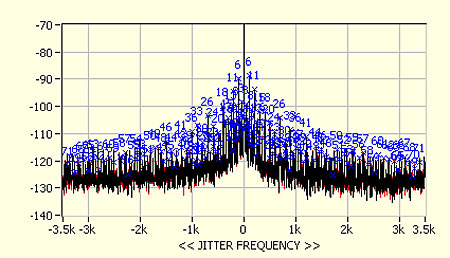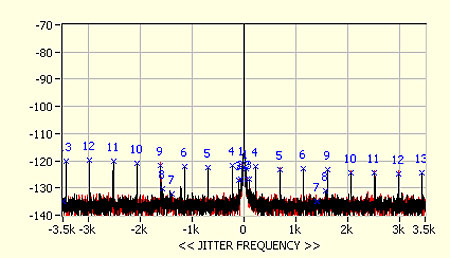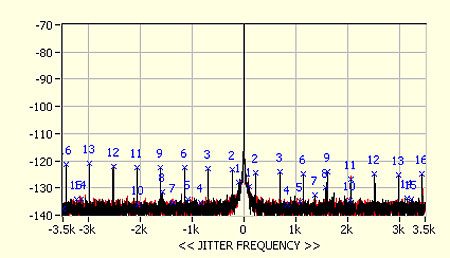I'm a little skeptical of set-ups where one connects straight from the analog minijack out of a Mac to BL speakers with built-in amp's. There are various issues - one being the impedance scratching when you connect or disconnect the minijack, unless you have the speakers off. Another being the booms of sound that go through to the speakers on occasion, as you are racing for the volume control on your laptop.
I would recommend having a unit between the laptop and the speakers. That could be a B&O audiomaster, or maybe preferably a Digital-to-Analog converter, DAC, with volume control. Then you can have the volume control of this unit be your volume limiter, while you also avoid any impedance scratching that could damage your tweeters.
Using a DAC, you would also get better sound. Laptops are compromised by their power supply. Here's a measurement Cambridge did of jitter to their DacMagic, using a laptop running with power supply connected.

Here's what this measurement looked like when the laptop was running off its internal battery.

This was with the DacMagic using the USB connection, in other words there was a wired connection from the source (the laptop) to the digital-to-analog converter, and this solid connection transmitted the power supply noise and distortion. The small DAC inside the Mac used for this measurement does not outperform the DacMagic, of course, and is what would be delivering a signal to your speakers if you use the minijack out directly to the speakers.
Your BeoLab 9s deserve better.
The first trick is to either create a galvanic separation, that is to ensure that there isn't a solid connection between the laptop/Mac mini and the speakers. You can do that by using the optical out signal, through the same minijack connection (if you have a Mac laptop), or by streaming to an Airport Express unit, and then using the optical out of that.
Here's what the measurements above looked like when they used the optical out Toslink instead of the USB:

The power-supply induced distortion is gone.
You can also use firewire from a Mac to a stand-alone DAC. Most such units used in music production will use the built in jitter elimination of firewire transfer (a simplistic way of putting what happens) to ensure the integrity of what's ported from the laptop/Mac mini.
Mattybass asked a question over at the Vintage-forum which is relevant here - he wanted to connect through his Edirol DAC to a Beocenter 7000; but in your case you could use such a unit to connect to the BL9s. Just get an RCA>PL cable, and connect that instead of the RCA>DIN cable that mattybass will be using.
http://forum.beoworld.org/forums/t/34230.aspx
It remains an absolute mystery to me that B&O has not done what Roland and others have done, as exemplified through the product below. This is a compact firewire enabled unit which takes the CoreAudio feed out of a Mac, and which can be used as a preamplifier to active BeoLab speakers - with a B&O skin such a unit would be heaven sent, could easily be integrated with other B&O kit, and would recruit young consumers in droves when they discovered what active speakers can do. (And you also get a very good headphone amplifier ...)
http://www.roland.com/products/en/FA-66/